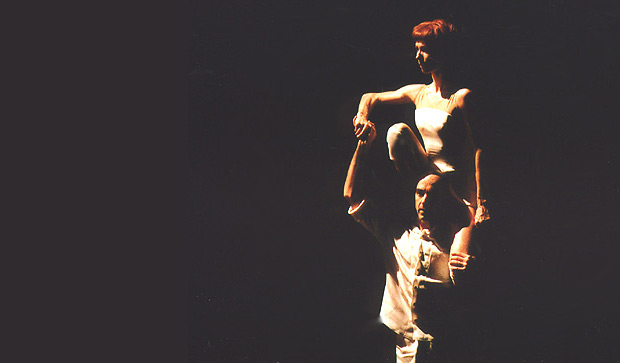
© John Ross.
Lynette Halewood with her personal selection of London dance memories this last year…
2014 has been a year of farewells. There have been many final or close to final performances from much loved dancers who have decided that the time has come to retire from the stage. It’s difficult to sum up the year without a certain melancholy breaking through. This year saw the last performances from Sylvie Guillem and Akram Khan together in Sacred Monsters, and the final performances of Guillem and Russell Maliphant in Push. Guillem’s final appearances in London are next year (already sold out). Khan too is reported to be thinking of giving up live performance. Both Push and Sacred Monsters showed Guillem and her collaborators in complete mastery of their skills and technique and possessed of an undimmed power to dominate the stage. But the really tearful and unforgettable moment in this year’s retirement memories was undoubtedly at the final performance of ENB’s Daria Klimentova as Juliet at the Royal Albert Hall in June. After the standing ovation and the hail of flowers, she took off her pointe shoes and threw them into the audience. I hope someone treasures them.

© Foteini Christofilopoulou. (Click image for larger version)
However, let’s not brood too much on departures. There were also moments during the year that brought great cheer and optimism for the future. Francesca Hayward’s debut in Rhapsody at the Royal Ballet announced the arrival of a thrilling new talent entirely at home in the Ashton style. And there was some new choreography this year that was both memorably clever and funny (Arthur Pita’s A Dream within a Midsummer Night’s Dream) and intricate and boldly designed (Crystal Pite, Polaris in the Adès programme Sadler’s Wells) that bodes well for the future.
Here are some of the dance moments of 2014 that stick obstinately in my memory.
January
At the Coliseum, English National Ballet showed off their whiz-bang Le Corsaire, a romp of a ballet. An improbable plot features pirates, slave girls, multiple kidnaps and poisoned flowers, but provides an excuse for some wonderful classical set pieces. These were seized with both hands by a commanding Alina Cojocaru as Medora, supported with his usual impeccable manners by Vadim Muntagirov. There were many fine performances in the supporting casts throughout the run, and I had real fondness for Michael Coleman’s sweet, silly, fat Pasha.
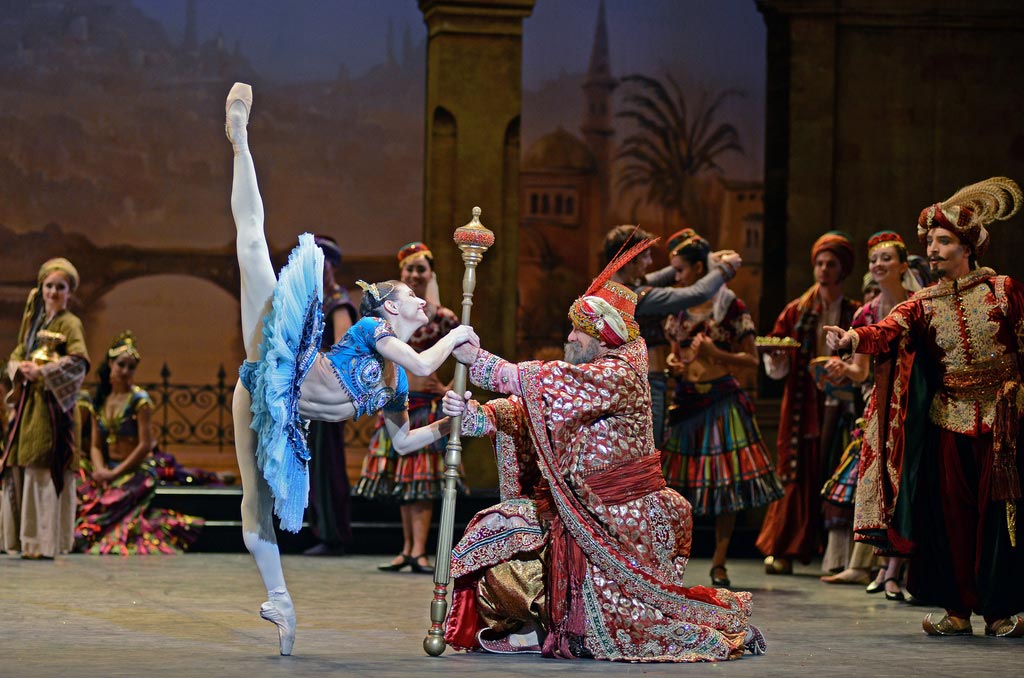
© Dave Morgan. (Click image for larger version)
Sidi Larbi Cherkaoui appeared in his own Apocrifu at the Queen Elizabeth Hall. His typical rubber-limbed moves bent himself and his cast, including a weirdly sinister Bunraku puppet, into improbable shapes. He is another performer who now appears less and less on stage, and I wonder if we will see him and his distinctive loose-limbed physicality again. It’s a great pity that the QEH doesn’t seem to get used as much for dance as it once was. The hall is smaller than Sadler’s, just right for smaller companies, less challenging to fill, with seats comfier than any other dance venue.
Laura Morera, a principal dancer with the Royal Ballet, who has not had as many of the major roles that she so surely deserves, finally made her debut in the title role in Giselle in January. It was a midweek matinee but all the same she still finally got a role long deserved and gave a warm and beautifully judged interpretation.
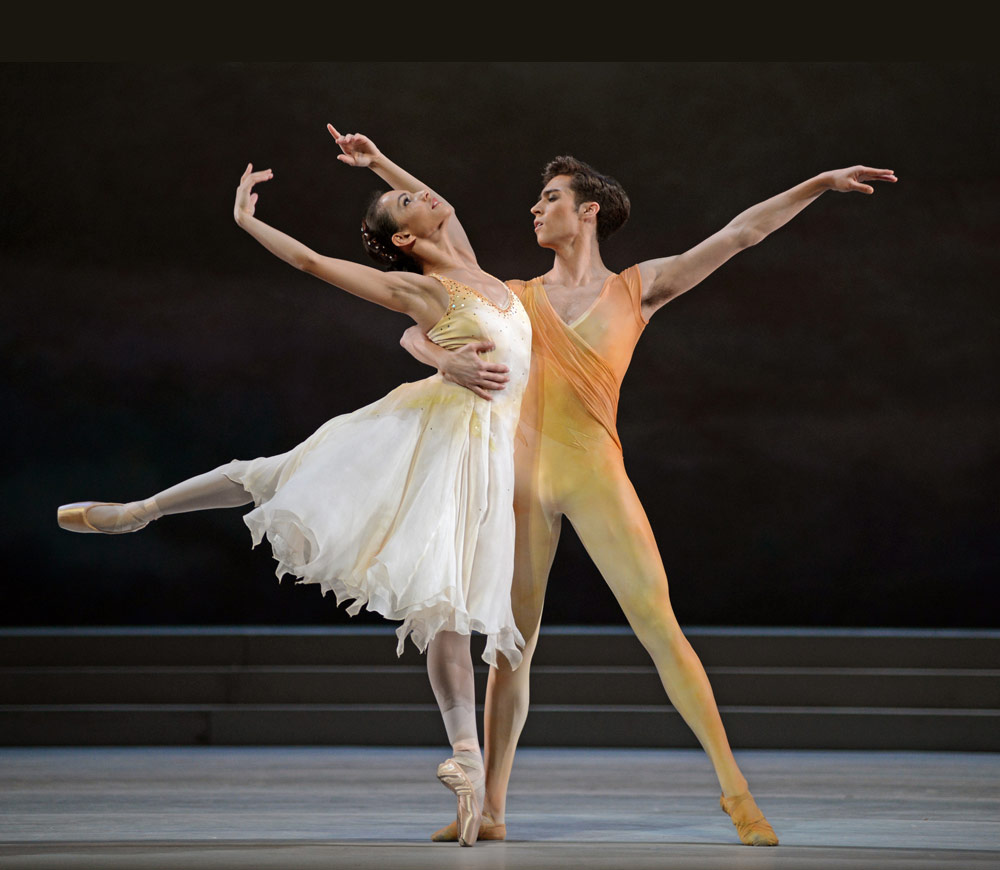
© Dave Morgan, courtesy the Royal Opera House. (Click image for larger version)
February
Francesca Hayward made her debut in Ashton’s Rhapsody at Covent Garden, coached by Lesley Collier. It was a stunning performance, technically completely assured and so polished. I can’t recall coming out of a performance feeling so cheerful about the future in years. Hayward is still only 22.

© Dave Morgan. (Click image for larger version)
March
Ballet Black are regular visitors to the Linbury in spring and over the last few years have been endlessly enterprising in their commissioning. Here Arthur Pita provided the runaway success of the evening. He doesn’t normally work in a classical form. But A Dream within Midsummer Night’s Dream is indeed a ballet. Ballet Black get their first tutus! It’s a very funny and subversive take on some seriously confused lovers.
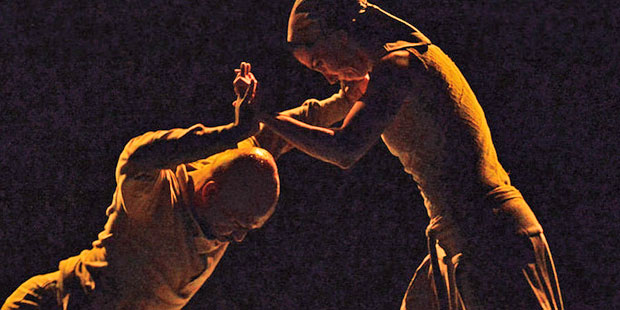
© Dave Morgan. (Click image for larger version)
April
ENB’s Lest We Forget programme at the Barbican commemorating the First World was an important milestone for the company. Tamara Rojo, ENB’s AD, commissioned a programme of new works for a company long starved of them, and managed to persuade much-in-demand choreographers to contribute. Familiar ENB performers emerged in a new light, in more contemporary vocabulary. Junor Souza wrapped a molten Alina Cojocaru around his shoulders in Russell Maliphant’s work, and Rojo herself intertwined with Akram Khan in his Dust. Liam Scarlett’s contribution, No Man’s Land, was his best work this year and included some passionate duets.
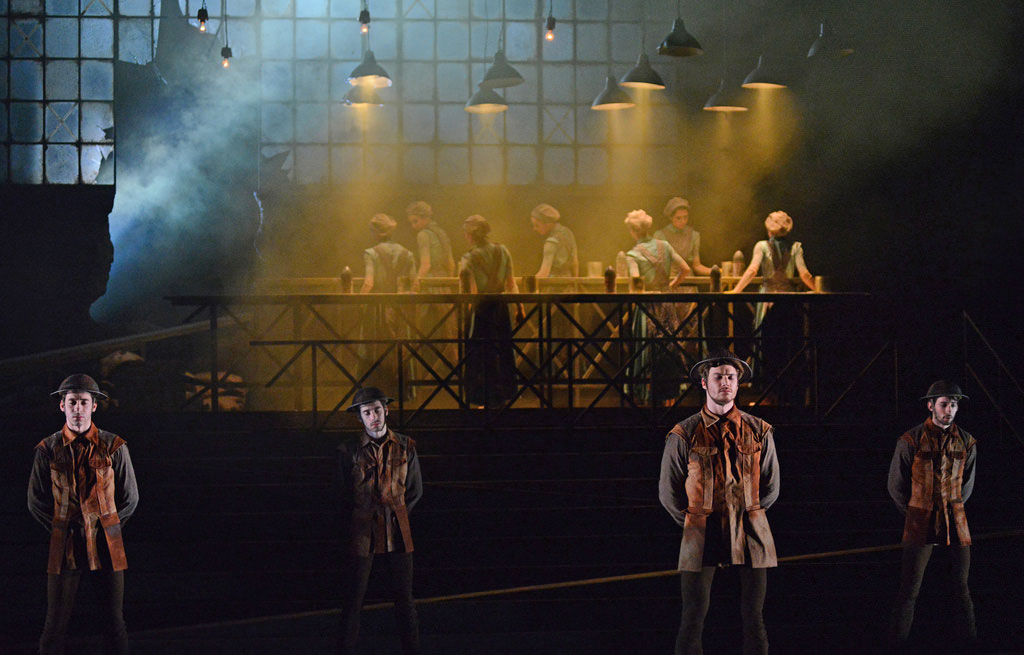
© Dave Morgan. (Click image for larger version)
At Sadler’s Wells, Crystal Pite brought her company in The Tempest Replica. This first gave us the main plot points of the play sketched out by the performers as puppets, and then dissected some key moments at greater length. At the time this seemed irritating and tricksy, but the work has remained obstinately with me and now some of those duets seem to have been remarkably delicate and ethereal.
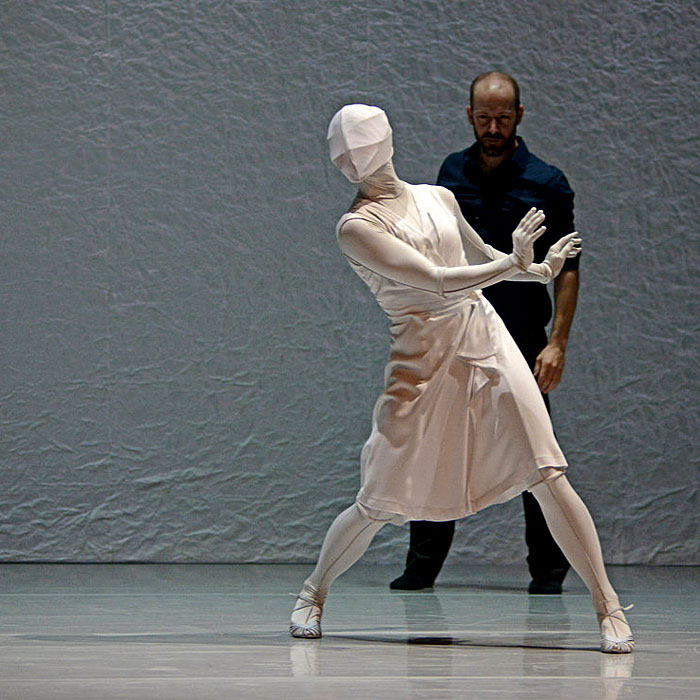
© Dave Morgan. (Click image for larger version)
At Covent Garden, A Winter’s Tale was the big event of the Royal Ballet’s year, a new three-act work from Christopher Wheeldon based on the late Shakespeare play. Expectations were very high, but so were the risks of using rather difficult source material. There was some unevenness in the storytelling with much exposition of plot in the first act and very little in the second, but Wheeldon had picked his cast with care and they delivered powerful performances. Watson was as deranged as one might expect as the jealous Leontes, but Lauren Cuthbertson found a surprising new strength and dignity as his wronged wife. Most remarkable of all was Zenaida Yanowsky as Paulina, the moral centre of this particular universe. The moment she turns on Edward Watson’s Leontes and cuffs him about the head for his crimes was utterly riveting. A mention must go too to Bennet Gartside as a hurried replacement in the second cast, a must quieter and more introverted Leontes, but still very affecting.
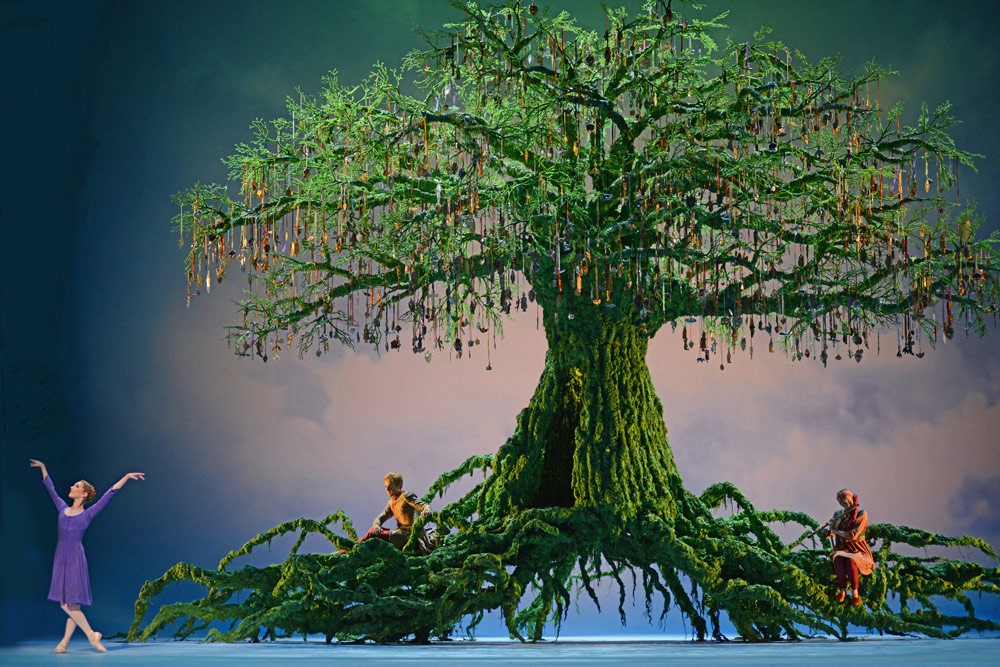
© Dave Morgan, courtesy the Royal Opera House. (Click image for larger version)
May
Hetain Patel is hard to classify as a performer, but easy to enjoy. His American Boy at the Lilian Baylis Studio a was a study in how to become a superhero. This is achieved via via an amusing patchwork of quotes he acts out from popular blockbuster films, sewn together with neat bits of camera work with some surprisingly nifty dance moves thrown in. In a year which saw some very bloated programmes (yes, Rambert, I’m thinking of you) it was good to find a show which was well-structured, made its point, and didn’t outstay its welcome.
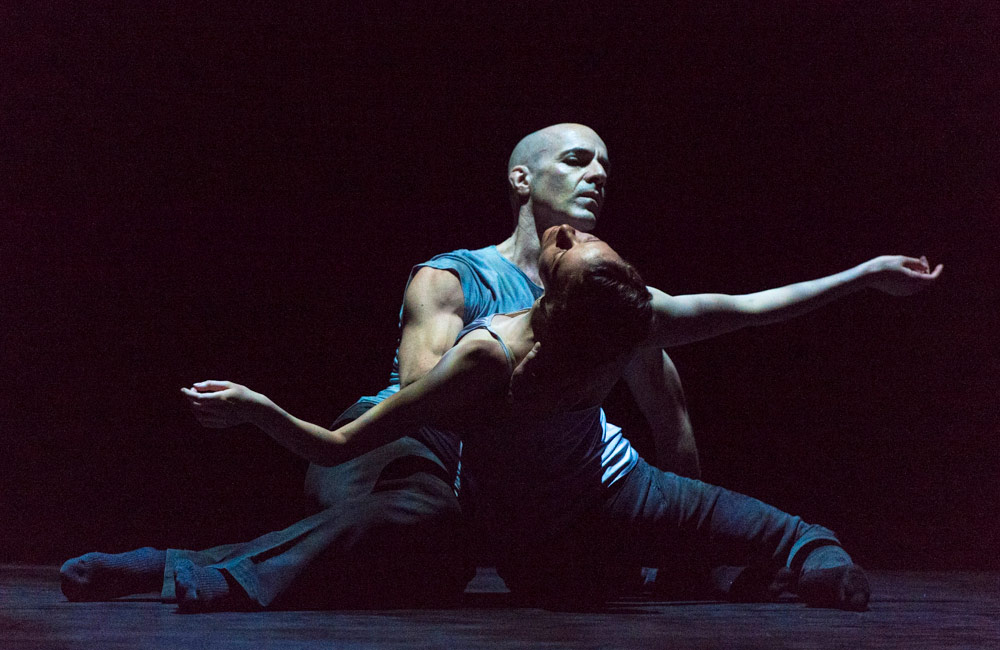
© Foteini Christofilopoulou. (Click image for larger version)
June
Russell Maliphant’s new triple bill Still Current brought us familiar Maliphant style but with some new performers. Carys Staton is a slender, willowy creature, an intriguing pairing with the solid oak-like form which is Dickson Mbi, or the coiled compact strength of Maliphant himself. The lighting of Michael Hulls was as always astonishing, imprisoning Mbi in rolling bars of light which persuaded the brain there was movement when in fact there wasn’t.

© Foteini Christofilopoulou. (Click image for larger version)
June brought ENB to the Royal Albert Hall for their huge in-the-round production of Derek Deane’s Romeo and Juliet. Carlos Acosta danced his last Romeo herewith Rojo to an emotional response from the audience(he does not finally retire from ballet until the end of the next season). Here too the great partnership of Daria Klimentova and Vadim Muntagirov finally came to an end. We have been so lucky to have had her and the Royal Ballet is now very fortunate indeed to have her young partner.
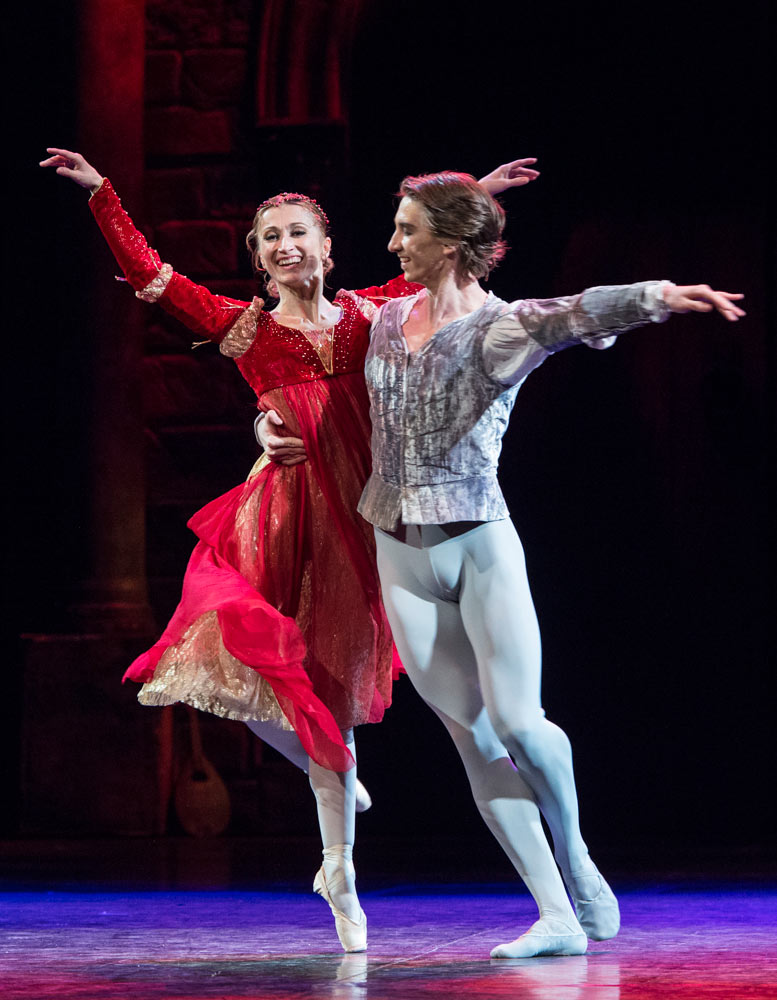
© Foteini Christofilopoulou. (Click image for larger version)
In contrast to the massive scale of the RAH performances, Birmingham Royal Ballet came up with a modestly-sized gem on their southern tour in the form of Alexander Whitley’s Kin. Whitley danced with BRB before turning to choreography and his work has been in many venues this year, usually in a much more contemporary vein. This was much more classical in flavour, tightly structured, an abstract but still deeply-felt piece. Some of BRB’s other new commissions seem to have faded rapidly from the memory. This one deserved more exposure.
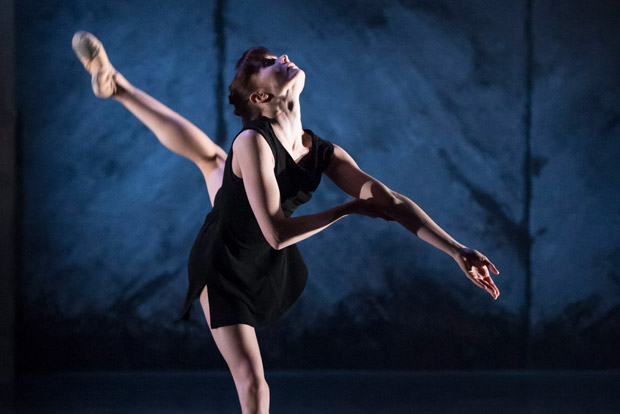
© Bill Cooper. (Click image for larger version)
July
Paul White is a winner of many dance awards, but this was the first time I caught up with him and realised why. He appeared at the Purcell room in the solo, Anatomy of an Afternoon, a reflection on, though not a direct depiction of, L’apres midi d’un faune. This had a truly hypnotic quality, evoking a languid but still dangerous wild animal. The movement is initially very slow and measured, a twist of the shoulders, a tilt of the hips, a stretch of the arms, morphing later into the rage of the caged animal. It was a very intense experience.
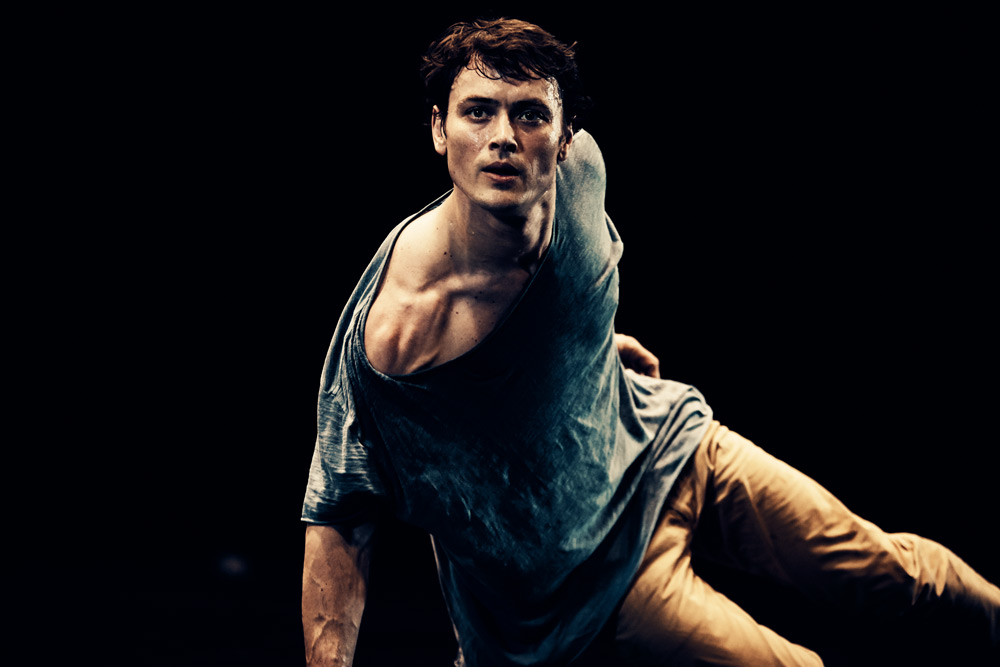
© Paul Hyde. (Click image for larger version)
This month also brought us the last-ever London performances of Guillem and Maliphant in the Push programme. It seemed a particularly precious experience. Guillem’s leg still shoots up towards the heavens as if it’s the most natural place in the world for it to go. Push is a rarity, a duet for a man and a woman that never insinuates anything about romantic love or sex or one partner supporting or dominating the other. It seems more about trust, co-operation and exploration.
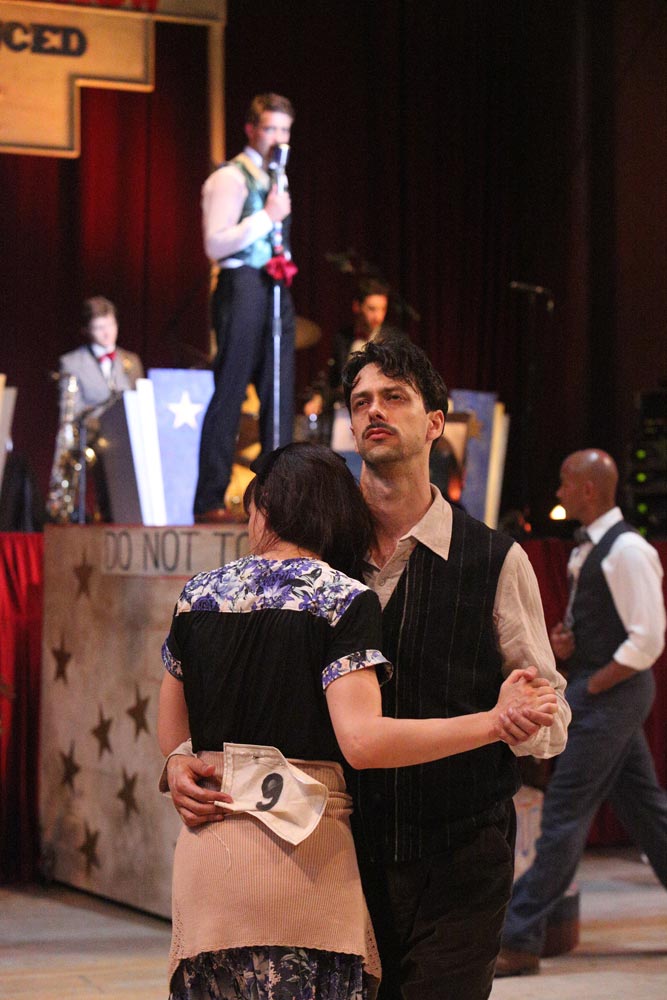
© Roy Tan. (Click image for larger version)
The World’s Greatest Show was the immodest title of an Arthur Pita piece staged in the Hamlyn Hall at Covent Garden. It was an enterprising use of a space seldom used for performance. This was based on the dance marathons of 1930s America, with its comic tone gradually darkening. It was too long but there are the bones of a great show in there.
August
Given that this month saw the Mariinsky in residence at Covent Garden, one might have expected some memorable moments from them. However, the company brought a conservative repertoire much of which was already familiar and often looked less stellar than their reputation. They did shine truly brightly though in a mixed bill which featured The Firebird and Concerto DSCH, a new work from Ratmansky in which they suddenly became alive, purposeful and energised.

© Foteini Christofilopoulou. (Click image for larger version)
September
The Deloitte Ignite weekend at the Royal Opera House brought us Leda and the Swan, a film made by Kim Brandstrup. He studied film before turning to choreography and this is a particularly successful creation which really is a dance film not a filmed dance. In a mere eight minutes it captures stunning performances from Zenaida Yanowsky and Tommy Franzèn, moving from victim and predator to mother mourning her son.
The Royal Swedish Ballet brought Mats Ek’s Juliet and Romeo to Sadler’s Wells. (Yes, there really has been a lot of Shakespeare around this year. There had been an earlier Romeo and Juliet, this year from Scottish Ballet too.) This was an odd, uneven work but still unsettlingly memorable. Ek’s staging is dominated by sliding panels forming walls around the characters, obstacles around which they flee or which can hem them in. It’s a very harsh society where Capulet thugs patrol threateningly and women are subject to violence. The lovers have few chances at passion. By far the most interesting and subtle performance is from the veteran Ana Laguna as the Nurse. It’s not entirely successful, but Ek undoubtedly sculpted a very compelling vision of the oppressive world that ensures the lovers don’t survive.

© Dave Morgan. (Click image for larger version)
October
The Royal Ballet’s run of Manon this autumn had some striking debuts, including Hayward and Osipova. The Des Grieux who registered most strongly was Muntagirov. His debut included a brilliant account of the Act 1 solo as if completely unaware of any of its technical difficulties, a kind of innocence entirely appropriate to the character. Yanowsky’s appearance as Manon might possibly be her last of her long career but if it was she must have been very happy as her performance with Bolle (and Acosta as Lescaut) was very special.

© Dave Morgan, courtesy the Royal Opera House. (Click image for larger version)
The Ashton mixed bill at Covent Garden should have been a highlight of the year, including as it did the masterpieces Scenes de Ballet and Symphonic Variations. Due the mysteries of coaching and the vicissitudes of casting it wasn’t. Performances were sadly uneven. However there was a stunning debut for Osipova as Natalia Petrovna in A Month in the Country, a sensitive and subtle reading from a dancer maturing into a much more varied artist than the technical exuberance of her past would suggest.

© ROH, 2014. Photographed by Tristram Kenton. (Click image for larger version)
Sadler’s enterprisingly staged an interesting mixed bill to the music of Thomas Adès, featuring the composer himself on piano and in the pit. The winner among the four different pieces was Polaris from Crystal Pite, utilising the massed forces of the Central School of Ballet and London Contemporary Dance School. Pite assembled the dancers in great waves and mounds, rippling across the stage like some giant marine organism.
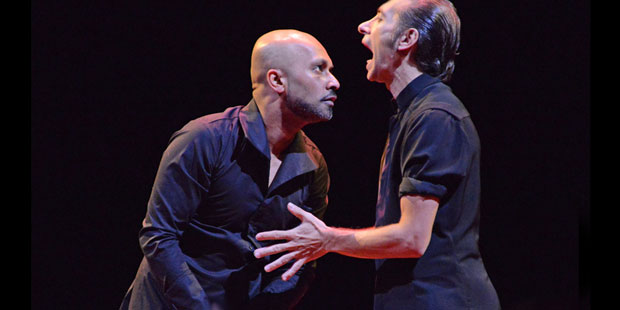
© Dave Morgan. (Click image for larger version)
November
Torobaka was a joint creation from Akram Khan and Israel Galván drawing on their kathak and flamenco roots respectively. Everyone had expected a strong competitive spirit to prevail here and indeed the protagonists traded brilliant solos from their traditions. But the work was funnier and more playful than expected. A little more of the two of them dancing tside by side would have been welcome but it was a great opportunity to see two masters of their respective arts at the absolute top of their game.

© Lise Smith. (Click image for larger version)
Another one of those items that made me feel cheerful about the future this year was the James Cousins double bill Without Stars / There We Have Been at The Place. This is based on the cult novel Norwegian Wood from Haruki Murakami. Its atmosphere is intense yet dream-like, its characters obsessed yet failing to connect fully with one another. These pieces were very simply staged but the duets were full of invention. In the final piece, the woman was supported throughout by her partner, never touching the floor and Cousins found a startling variety of ways that she could climb up, around, under and over his body.

© Dave Morgan, courtesy the Royal Opera House. (Click image for larger version)
December
We should end the year on an upbeat note. The Mad Hatter’s Tea Party is by Kate Prince for ZooNation Dance Company, and is staged in the Linbury. It’s a madcap hip hop take on the Lewis Carroll stories. The adapted narrative of characters in a lunatic asylum doesn’t bear a lot of scrutiny but the dancing (Tommy Franzèn again) is full of verve and energy, the live band is excellent, and there are squeals of delight all round. The dormouse puppet in the teapot as a suave soul singer is brilliant. Best stuffed animal of the year. Enjoy your dance in 2015.












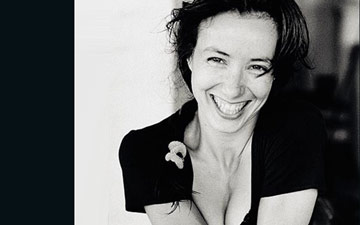

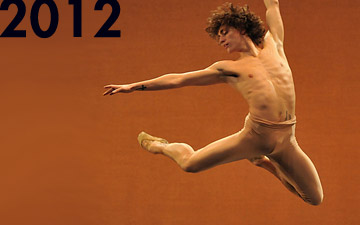

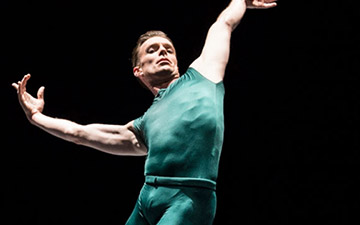
I am glad that someone else thinks V Muntagirov was a fabulous Des Grieux too! I was deeply affected by his acting, (notwithstanding his wonderful dancing.)
Too, I echo the sentiments about Cherkaoui. Apocrifu was engaging, and yes, moving. I have read that some of Cherkaoui’s choreography is coming to Dance East in June 2015, for which I have booked.